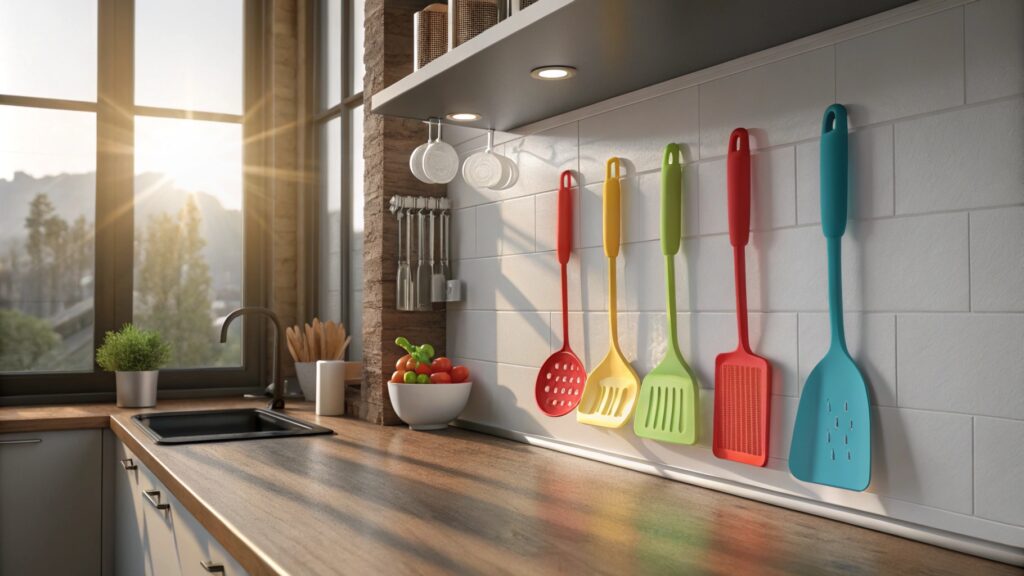
Choosing the right tools for your kitchen can be challenging. You want safe, durable, and functional utensils that suit your cooking style.
Silicone kitchen utensils are heat-resistant, non-toxic, and versatile, making them popular for modern kitchens. However, they also have some drawbacks worth considering.
Let's dive into the benefits and potential concerns of using silicone utensils in your kitchen.
Is silicone good for kitchen utensils?
Silicone is increasingly popular for cooking, but how does it really perform in daily use?
Silicone kitchen utensils are durable, heat-resistant, and non-stick, making them ideal for modern cooking. They are also safe for most cookware, including nonstick pans.
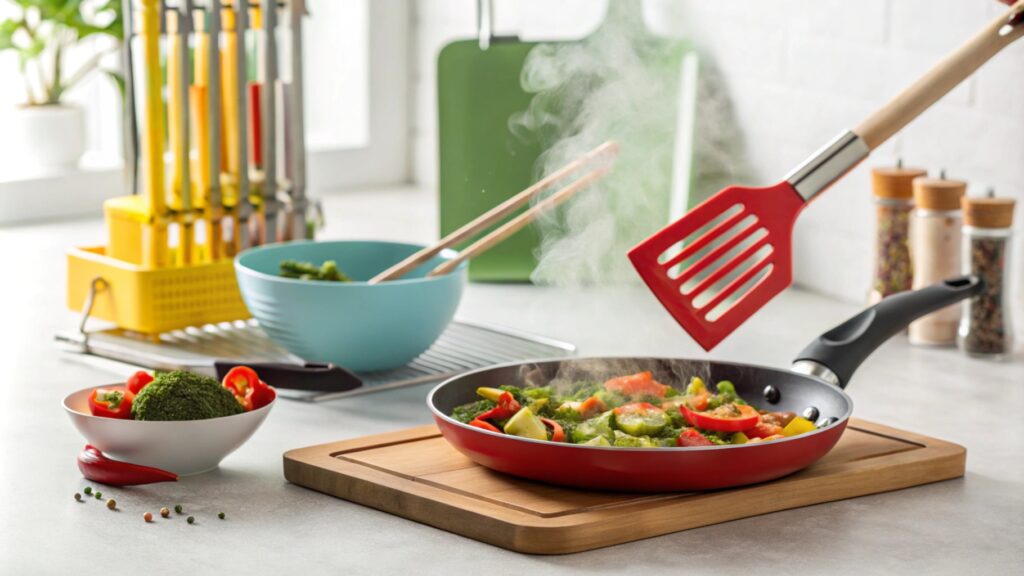
Benefits of silicone kitchen utensils
- Heat resistance: Silicone withstands temperatures up to 428°F (220°C), making it suitable for high-heat cooking tasks such as sautéing or frying.
- Non-stick surface: Food doesn't adhere to silicone, making cleaning much easier compared to metal or wooden utensils.
- Durability: Unlike wood that cracks or metal that rusts, silicone resists wear and tear over time.
How does silicone compare to other materials?
| Feature | Silicone | Wood | Metal |
|---|---|---|---|
| Heat Resistance | Up to 428°F (220°C) | Moderate | Very High |
| Dishwasher Safe | Yes | No | Yes |
| Non-stick Safe | Yes | Yes | No |
| Eco-Friendliness | Moderate | High | Low |
Silicone is a balanced option for its combination of safety and functionality. However, it may not suit all cooking styles. For example, some chefs prefer the rigidity of metal tools for heavy-duty tasks.
What are the cons of silicone utensils?
No product is perfect, and silicone kitchen tools are no exception.
Silicone utensils may discolor over time, absorb odors, or feel less sturdy compared to wood or metal tools.
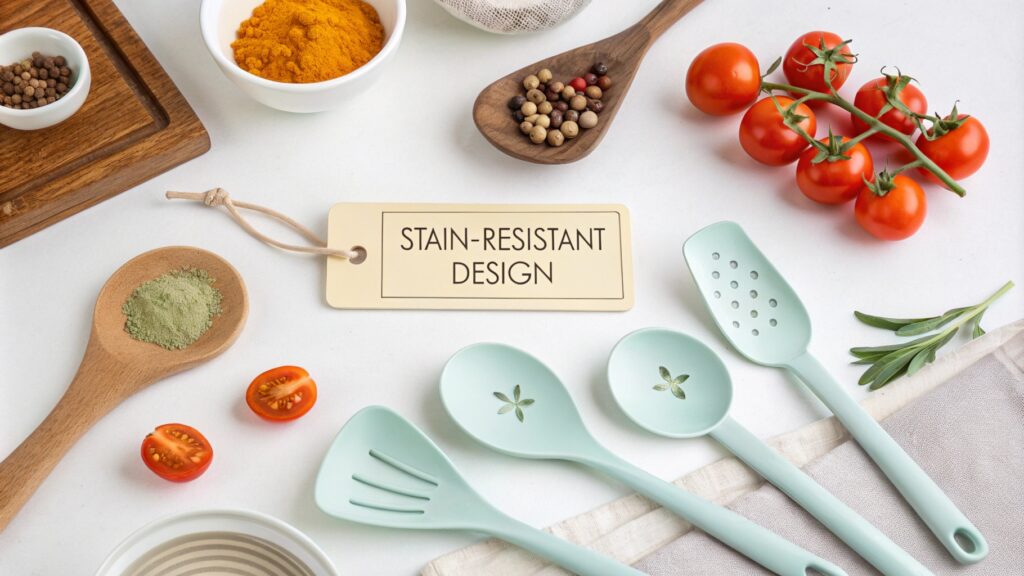
Common drawbacks
- Discoloration: Contact with acidic or vibrant foods such as tomato sauce or turmeric can stain the surface of silicone.
- Odor retention: Silicone can absorb strong odors, particularly when exposed to garlic, onions, or spices.
- Flexibility issues: While flexibility is useful, it can make silicone unsuitable for tasks requiring rigidity, like flipping heavy burgers.
Mitigation tips for silicone utensils
- Use light-colored silicone utensils to reduce visible stains.
- Soak utensils in a vinegar-water solution to neutralize absorbed odors.
- Pair silicone utensils with sturdier tools for tasks requiring extra strength.
Do chefs use silicone cooking utensils?
Silicone tools are common in home kitchens, but do professional chefs rely on them?
Chefs use silicone spatulas and brushes for specific tasks, but they often prefer sturdier materials for heavy-duty cooking.
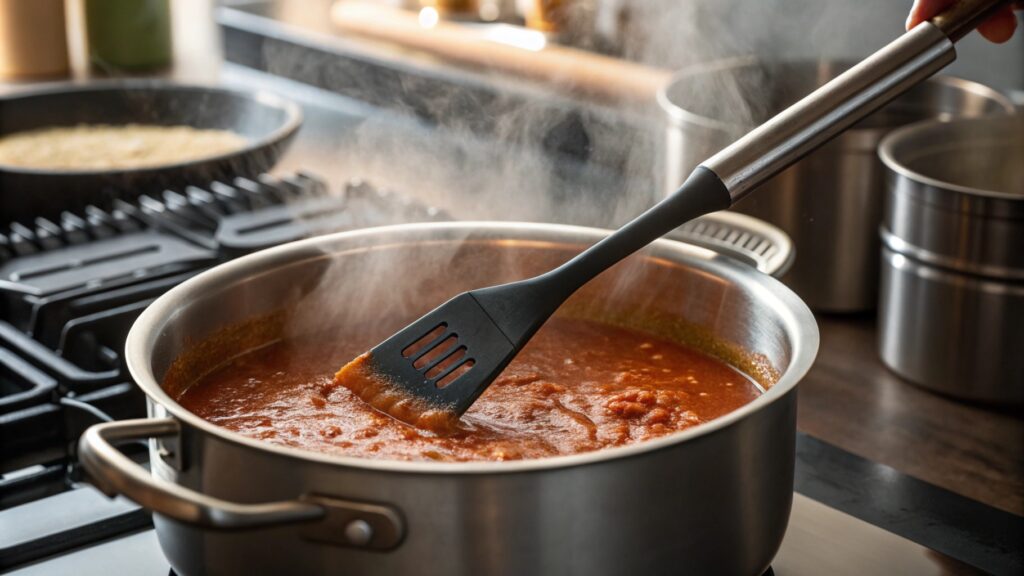
Why chefs use silicone
Chefs appreciate silicone's heat resistance and flexibility for tasks like stirring sauces or spreading glazes. Silicone pastry brushes are particularly popular for their precision and easy cleaning.
When silicone falls short
For heavy-duty or high-pressure tasks, such as carving or flipping large meats, metal utensils often outperform silicone. Chefs may also avoid silicone in open-flame cooking scenarios.
Can silicone utensils go in the oven?
Silicone is famous for its heat resistance, but can it handle the extreme heat of an oven?
Most silicone utensils are oven-safe up to 428°F (220°C), making them suitable for baking or roasting tasks.
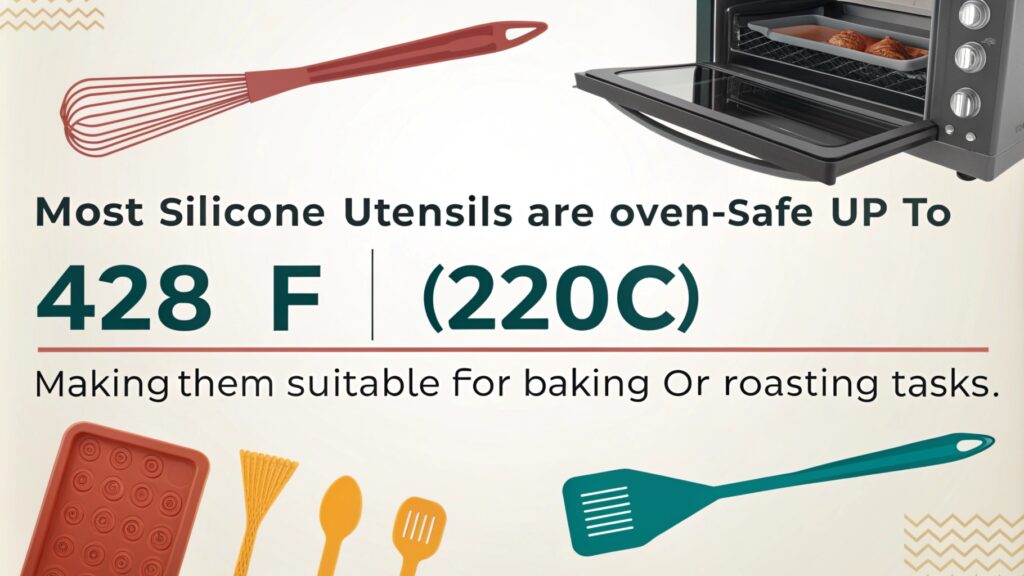
Practical uses for silicone in ovens
- Baking mats: Silicone baking mats are popular for cookies and pastries.
- Cooking tools: Spatulas and tongs made of silicone can assist in oven-based recipes without melting or warping.
Limitations to consider
Always check the manufacturer’s guidelines, as low-quality silicone might degrade under prolonged exposure to high heat.
Why do silicone utensils get sticky?
Over time, some silicone tools develop a sticky surface. Why does this happen?
Sticky surfaces usually result from residue buildup or prolonged exposure to oil and grease.
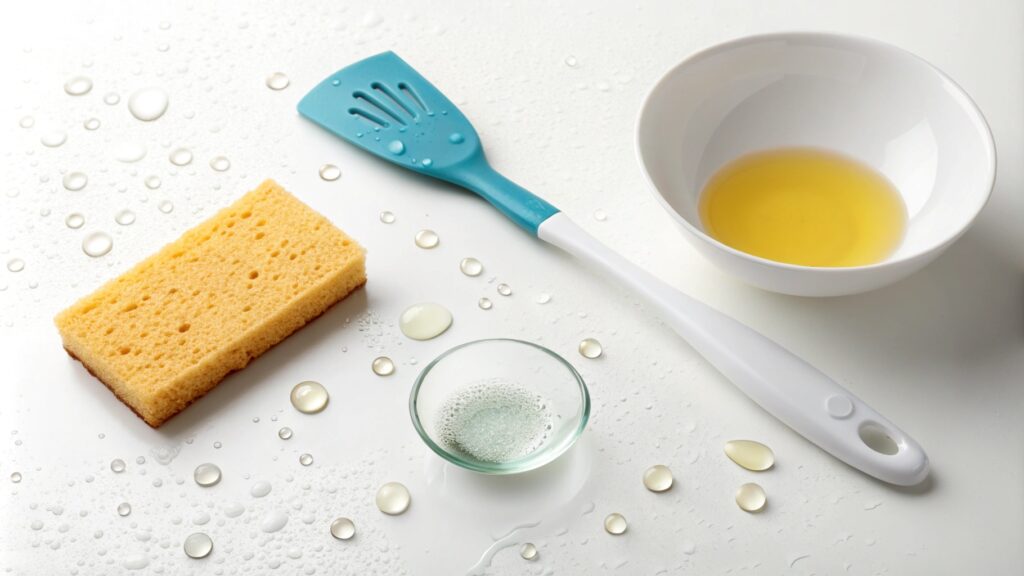
Cleaning methods to fix stickiness
- Soak the utensils in a mixture of warm water, vinegar, and baking soda for 15 minutes.
- Scrub gently with a non-abrasive sponge to remove grease.
- Rinse thoroughly and dry completely to prevent further buildup.
Prevent stickiness by regularly washing your utensils and avoiding the use of harsh cleaning agents that may degrade the silicone surface.
Are silicone utensils safe for nonstick pans?
Protecting your cookware is as important as choosing the right utensils.
Silicone utensils are gentle and safe for nonstick pans, preventing scratches and prolonging their lifespan.
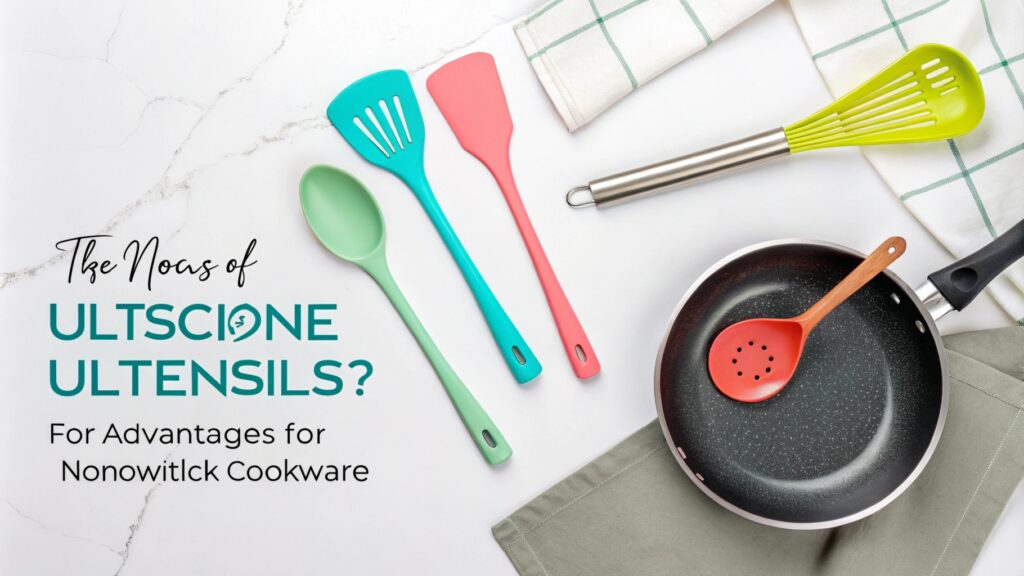
Advantages of silicone for nonstick surfaces
Silicone’s soft yet durable material ensures that the protective coating on nonstick pans remains intact. Unlike metal, it won’t scratch or chip the surface.
Why it matters
Using silicone helps maintain the nonstick pan’s functionality and avoids the risk of ingesting particles from a damaged coating.
Do silicone utensils have microplastics?
Environmental concerns are growing about microplastics in kitchen tools.
High-quality silicone does not contain microplastics, but low-grade products might. Always choose food-grade silicone for safety.
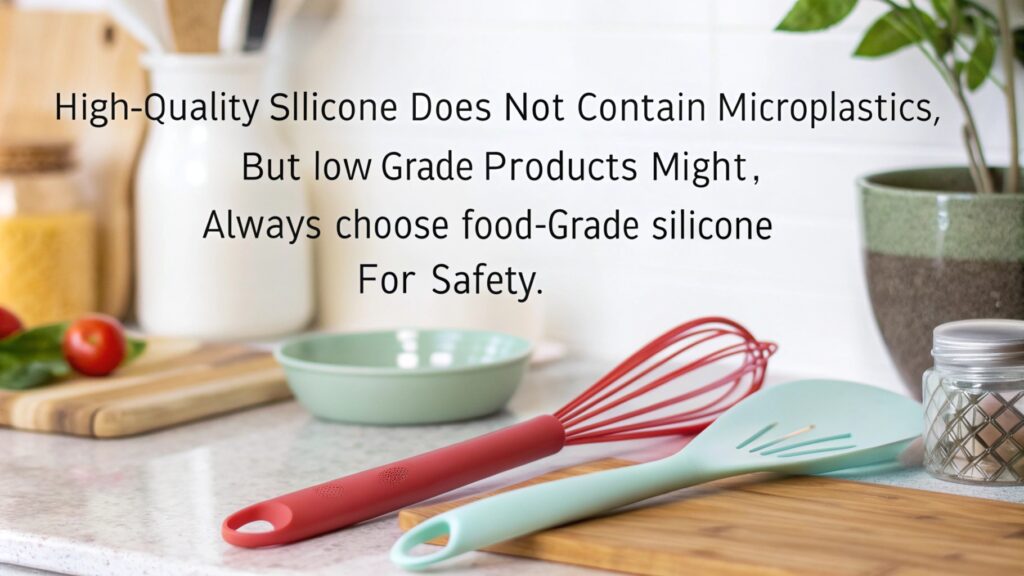
Silicone itself is a synthetic polymer, but food-grade variants are chemically stable and non-toxic. To ensure safety, look for certifications such as FDA or LFGB compliance when purchasing.
Conclusion
Silicone kitchen utensils combine versatility, safety, and convenience, making them a valuable addition to any modern kitchen. Understanding their benefits and limitations ensures you get the most out of these handy tools.
